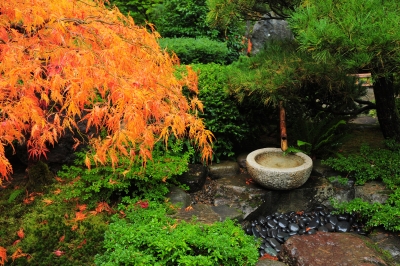A Japanese themed garden, or Zen garden, is a fun and cultural alternative to the more traditional landscaping options, and a great choice for someone who is looking for a new gardening challenge or experience.
Among a number of unique features, a Zen garden is specifically designed to mimic natural habitats, specifically that of Asian regions. This aspect makes it particularly eco-friendly, as it incorporates all of the natural elements, right down to grass, sand, water and even rocks.
While many people assume that designing a garden like this sounds like a lot of work and money, these gardens are surprisingly easy to maintain and are cost-effective, more so than most other types of gardens. Caring for a Zen garden is relatively simple, as they will often exclusively use perennials, which are types of flowers that bloom annually and stay alive throughout the winter season.
Additionally, since a majority of the space for this particular type garden incorporates sand and stone, these elements are also going to be sufficient for a number of years, instead of just one season. Sand will have to be changed over time, but generally, you’re dealing with mostly upfront work, and then simple watering and maintaining afterwards.
Also Read : Four Tips to “Green” your Garden
To get started and keep things eco-friendly, here’s what you’ll need to focus on:
1. Plants come first — Bamboo, grasses, small trees and other ground coverings will be the starting point of your garden. Since they’ll be the most notable elements, situate them as the main focus for a visual anchor, then build around those spots.
While you can incorporate flowering in certain areas, keep in mind that the purpose of a Zen garden is to replicate nature rather than a concentration of bright color. Now, that doesn’t mean you should avoid using flowers altogether– just use a little more discretion than you would in a typical garden.
2. Stone and ground covering — Particularly if you want to incorporate stepping stones or pathways, pebbles, sand and other kinds of ground stone are perfect fits. Some Zen gardens will also incorporate larger stones for pathways; however, either one can be effective.
Stone is the more of a typical ground covering used in a Zen garden, since grass isn’t always as prominent in Asian landscapes as it is in the United States. Use it as a base for your plants, streams and other “busy” areas of your garden.
3. Incorporating water — Ideally, a Zen garden will incorporate the calm and soothing company of running water, both for visual and auditory compliment. Rocks and pebbles, and even larger plant pieces, like bonsai trees, will provide a good backdrop for a small fountain or stream.
4.Light fixtures — Pagodas, or some kind of oil or solar light that doesn’t use electricity, are ideal to keep your garden visible in the evenings. Most people will use a form of solar lighting for their gardens, though keep in mind you’ll have options that are specifically styled for an Asian-themed garden.
Best Choice for Eco-Friendly Leisure
If you’re looking for an eco-friendly hobby or leisurely activity, there aren’t too many choices that are going to top a well-maintained Zen garden. Landscape that looks natural, yet pleasing to the eye, is an attractive option in 2013, so it can’t hurt to at least give it a shot if you’ve got some yard space to work with.




